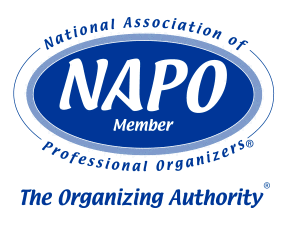Do You Make Resolutions or Set Goals?
Frankly, I’m not a fan of New Year’s “resolutions.” I don’t know why, but the thought of taking one day to analyze my life and see what I’ve been doing right, or wrong, and change it just seems strange. Don’t we do that on a constant basis? I frequently analyze what’s working, what makes me feel good about myself, and brings joy, happiness, and success to my life and others’. If I need to make changes I do. No matter what time of year it is.
Now “goals,” that’s a whole different animal. I love, love, love goals. Specifically, I like SMART* goals. They keep me on track, give me accountability, and push me to achieve the things that are important to me.
I find goal setting to be invigorating. It makes me think about what I want my life to look like and how much time I am willing to devote to each facet of it.
Setting a bunch of goals that aren’t attainable based on the number of hours in the day doesn’t make sense and sets us up for failure. Setting fewer, more important, goals sets us up for success. I start with five annual goals and adjust throughout the year as necessary.
Here’s the start of my list for 2015:
1. Reduce unnecessary physical clutter.
Yes, even a Professional Organizer has clutter. The more time I spend with my clients, the more I desire to reduce the clutter around my own home too. Although not overwhelming, I probably have too many knick knacks, too many unused kitchen appliances and serving pieces, and too many throw pillows and blankets. The “too many” list goes on and on. I need to find good homes for the items that are just taking up space and not providing value to my life.
My goal: Spend at least two hours a week eliminating clutter from my home.
2. Reduce e-mail clutter.
Like most of us, my e-mail box can get out of control. Every time I purchase something on-line, I end up on a list. Each time I see a blog or newsletter I like, I subscribe to their list. Being on each of these lists was important and relevant at the time, but probably isn’t any more, and the stress of seeing all those e-mails in my in-box is overwhelming.
My goal: Reduce my in-box by 50% by unsubscribing or using Unroll.me.
3. Take care of myself.
The best gift we can give ourselves is the gift of good health. Am I ever going to be a professional athlete? No. Will I devote an hour every day to just exercise? No. But there are some things I can do to point me in the right direction of maintaining good health.
My goal: Walk 70,000 steps and spend at least 70 minutes lifting weights each week.
4. Maintain a gratitude journal.
I am very fortunate. I have a great life. But, like a lot of people I know, I tend to spend more time focusing on the not-perfect areas of my life. That needs to change. I need to spend more time focusing on the positives. Recording them in a gratitude journal will help me do that.
My goal: Record at least five entries per week in a gratitude journal (I chose the My Wonderful Life app.)
5. Make sure my business supports my personal goals.
I love the work I do. I am grateful to have fantastic clients with a true desire to change their lives. I’m especially grateful when I connect with clients in ways I didn’t know I could, like the woman that texted “You have gone above and beyond any expectations I could have had about what a Professional Organizer has to offer. You are moving me forward in profound ways.” She is my ideal client: open to and appreciative of the change being organized can provide. These clients feed my soul and make my personal life happier.
My goal: Evaluate every client to ensure they meet the criteria of my “ideal client.”
So, that’s the start of my 2015 list. Do any of these resonate with you?
Happy New Year!
P.S.: If any of you have, or know of someone that has, a business, please share my list of Top 10 Business Goals.
Cindy Jobs
 www.organizetosimplify.com
www.organizetosimplify.com
 National Association of Professional Organizers, Seattle Chapter President
National Association of Professional Organizers, Seattle Chapter President
 Certified Premium Subscriber, Institute for Challenging Disorganization
Certified Premium Subscriber, Institute for Challenging Disorganization
*Specific, Measurable, Attainable, Relevant, Time-Based
 The holidays are nearly behind us, but there’s possibly one more thing most of us need to do . . . . pack it up!
The holidays are nearly behind us, but there’s possibly one more thing most of us need to do . . . . pack it up!










